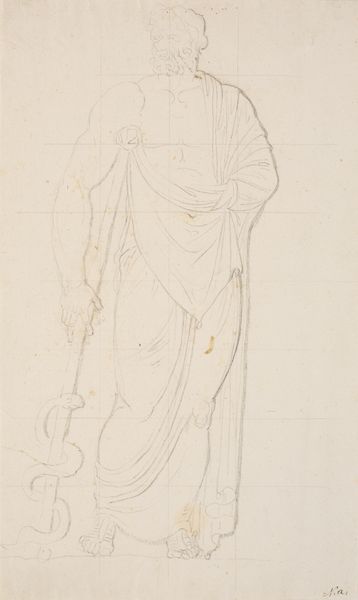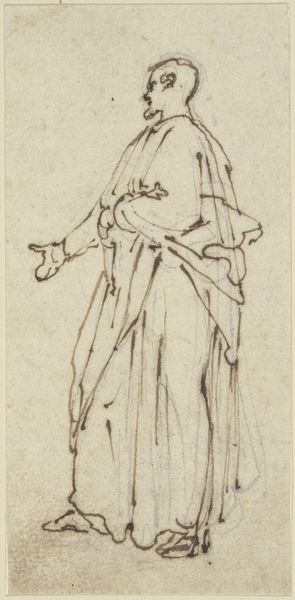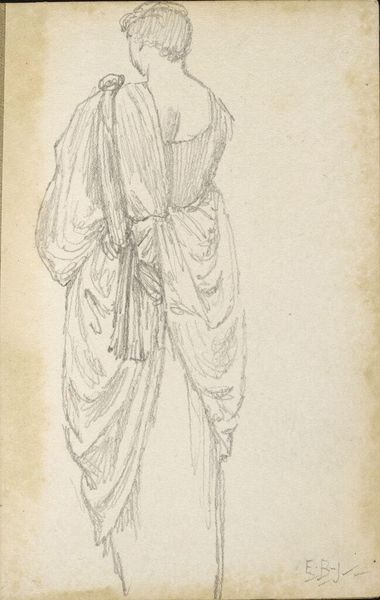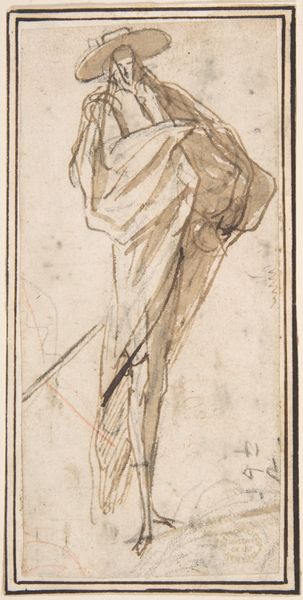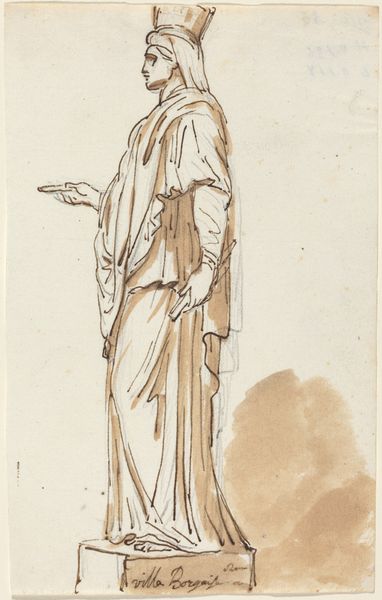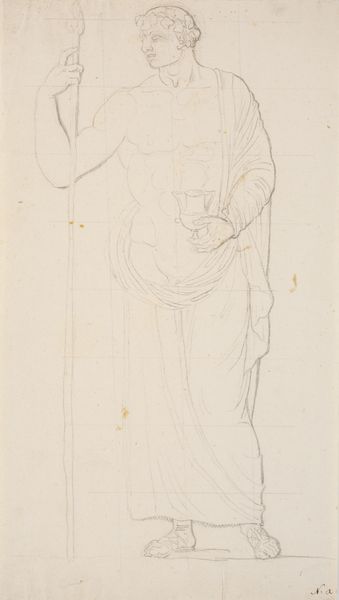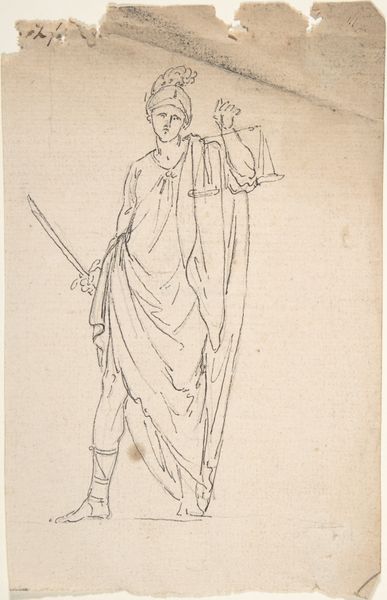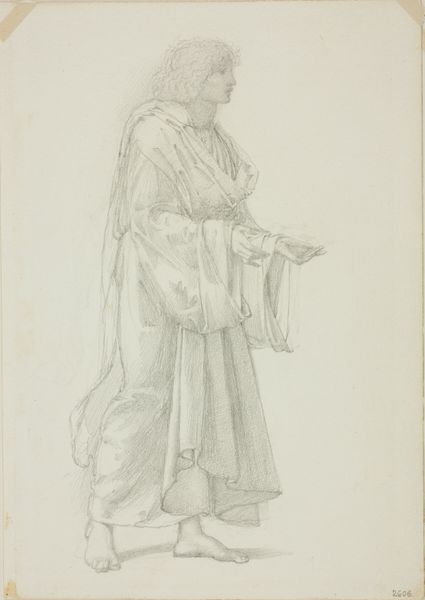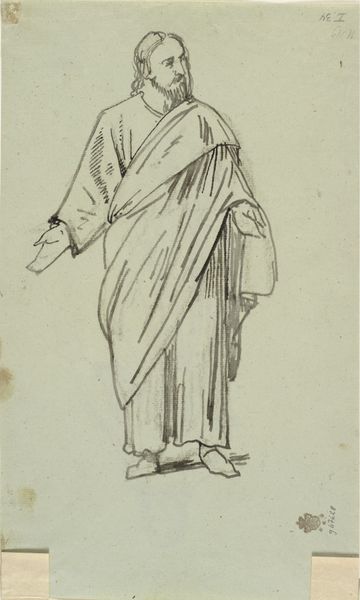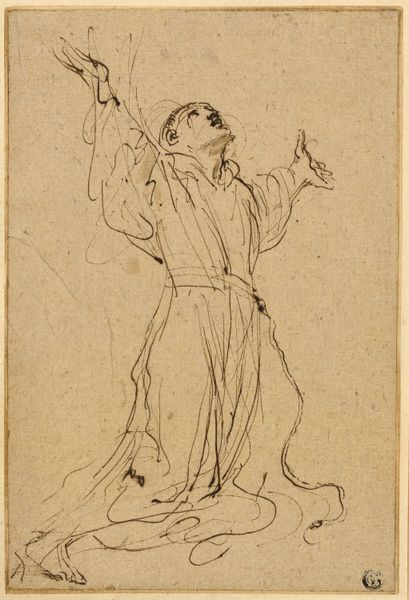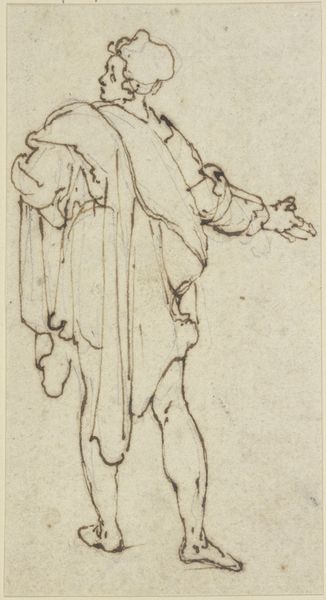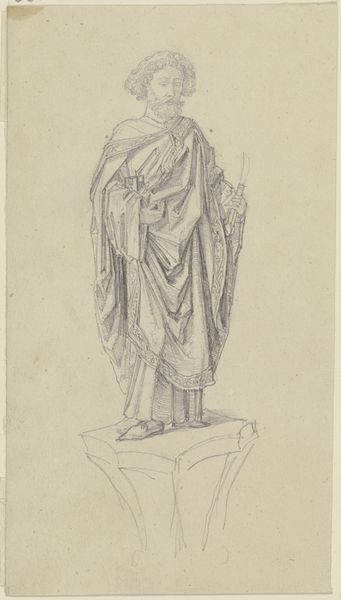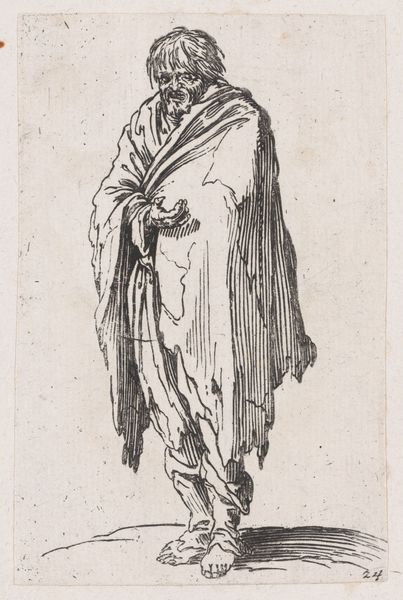
drawing, ink
#
portrait
#
drawing
#
figuration
#
ink
#
history-painting
#
academic-art
Dimensions: 204 mm (height) x 132 mm (width) (bladmaal)
Curator: Before us we have "En stående draperet kvindefigur", or "A Standing Draped Female Figure," a drawing by Nicolai Abildgaard, likely created between 1743 and 1809. It’s rendered in ink and resides here at the SMK. What are your initial thoughts? Editor: Immediately, I'm struck by the confident simplicity of the lines, and a subdued emotional tone. The figure seems poised but also contemplative. I wonder what her narrative is? Curator: The classical references are clear and cannot be divorced from the sociopolitical sphere and power of antiquity at that time. Abildgaard was, after all, a prominent figure in the Danish Neoclassical movement. We need to think about how the image itself operates as a cultural artifact. Editor: Absolutely. But let’s also consider that the seemingly objective "classical" ideal was anything but for women, given their limited freedoms. How did this prescribed, almost stifling, archetype resonate with women? Or was it strictly meant for male consumption? The figure with a blade is intriguing here... does it add a nuance to her perceived passivity? Curator: Indeed. The objects she carries invite inquiry into that representation, and potentially suggest an allegorical theme from ancient Greek plays that deal with these very tensions. But looking at the broader cultural and institutional influence of Abildgaard, as the director of the Academy, we need to understand what was "permissible" or encouraged at that time to impact emerging art students. How was he promoting those historical views? Editor: So, you're suggesting we analyze Abildgaard’s artistic choices to better understand how societal power structures subtly manifest in what may appear to be neutral renderings of antiquity. I think exploring his work is also exploring gender roles of that time. How were the dominant structures and gender relations affecting even how someone chooses to depict their subject? Curator: Precisely. It highlights the role of art in perpetuating—or, occasionally, challenging—the status quo. Editor: Examining art through such interconnected layers, while placing the power relations into a discourse helps make this a truly insightful analysis. Thank you for offering that viewpoint. Curator: Likewise. I find that the act of re-examination fosters important dialogue.
Comments
No comments
Be the first to comment and join the conversation on the ultimate creative platform.
